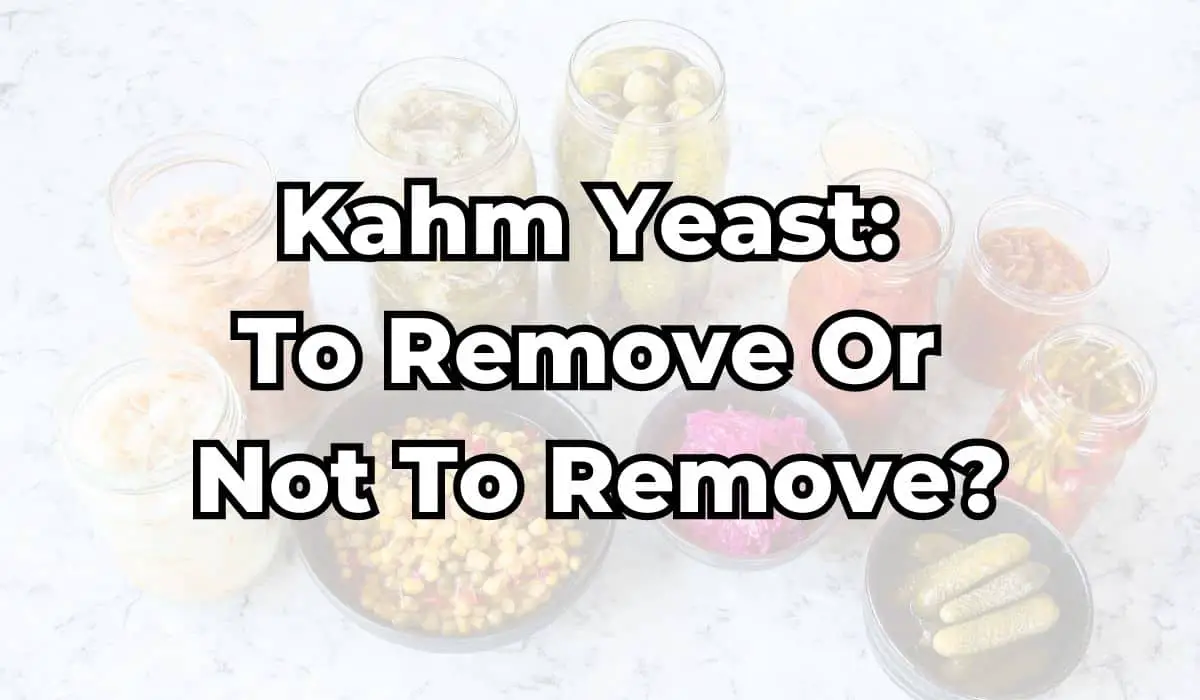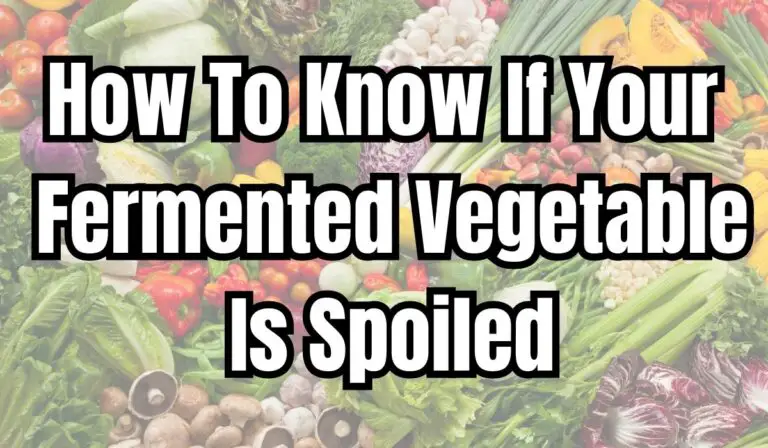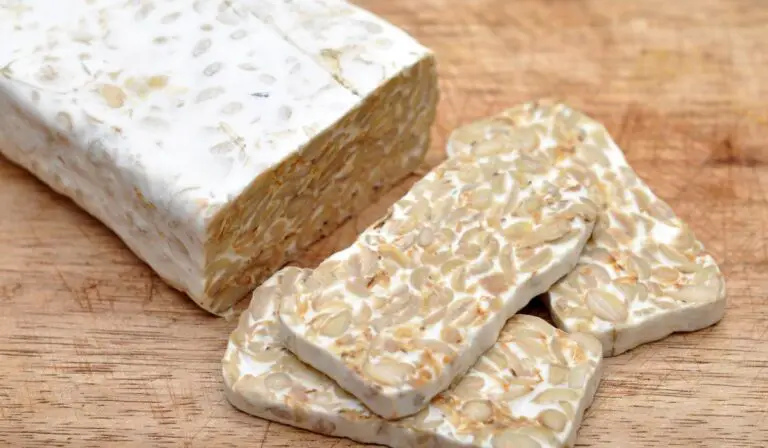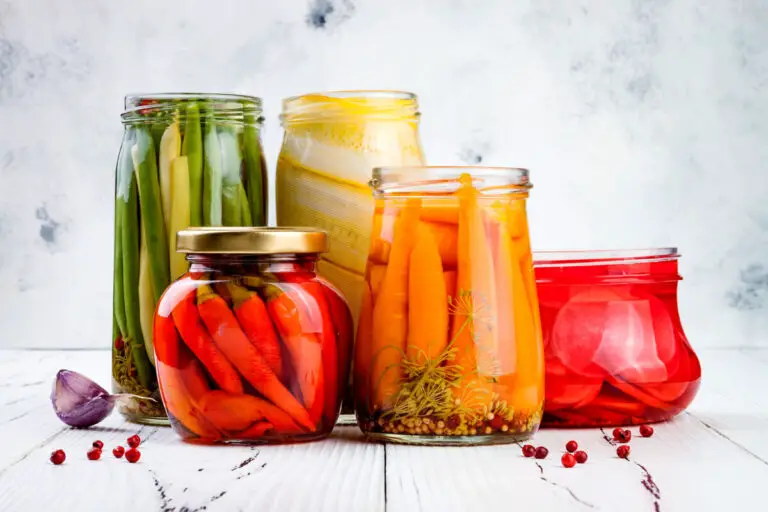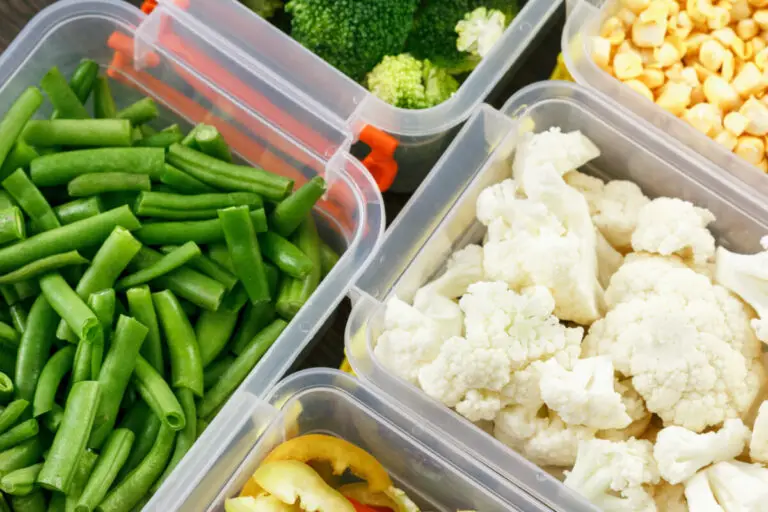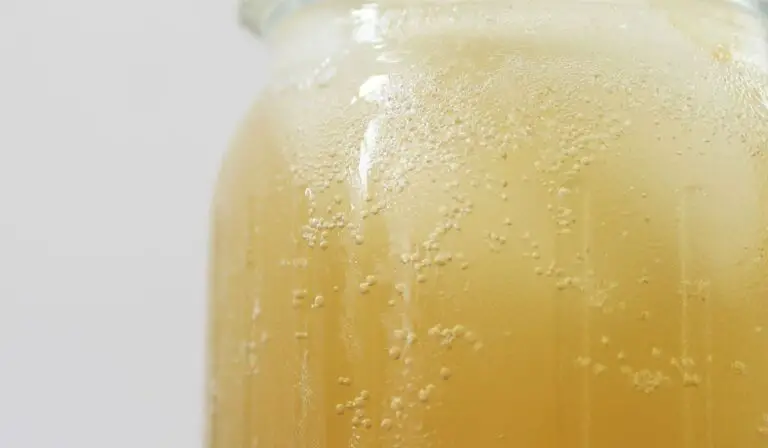Should I Remove Kahm Yeast From My Fermented Vegetables?
Navigating the colorful and aromatic world of home fermentation can be captivating, filled with flavors tantalizing the palate and beneficial bacteria boosting gut health. However, even the most experienced fermenters sometimes encounter unexpected guests. One such visitor, Kahm yeast, often triggers alarm and uncertainty. Should it stay, or should it be promptly removed?
Kahm yeast is not harmful, and eating a ferment with Kham Yeast is OK. However, it can cause a displeasing flavor or aroma. If you find a white layer floating on your ferment, just skim it off. It is usually pretty easy to remove it.
In this article, we will delve into the nature of Kahm yeast, its impact on your fermented vegetables, and whether you should be concerned about it. So before you reach for that spoon to scrape it off, join us as we unravel the mystery of Kahm yeast in your fermentation journey.
Understanding Fermentation and Kahm Yeast
Fermentation is a time-honored method of food preservation, adding depth and complexity to the flavor of fruits, vegetables, dairy, and more. It is a biological process that relies on the activity of microorganisms, such as bacteria and yeast, to transform sugars into alcohol, gases, or acids.
This process enhances the taste and nutritional value of the food and acts as a natural preservative by creating an environment inhospitable to harmful bacteria.
Among the various types of yeasts and bacteria that may appear during fermentation, Kahm yeast is one of the most commonly encountered.
Unlike mold, which can be an actual spoilage organism, Kahm yeast is a type of wild yeast that typically develops on the surface of fermented foods. It appears as a thin, creamy, or powdery layer that may cover the entire surface of your ferment.
Kahm yeast differs from the beneficial bacteria we aim to cultivate during fermentation. While these bacteria work beneath the brine, converting sugars into lactic acid and imparting that tangy flavor, Kahm yeast is a surface dweller.
It tends to form when the environment within the fermentation vessel becomes more hospitable to yeasts, which can happen if the ferment is exposed to too much oxygen, the temperature is too warm, or the salt concentration is too low.
How to Identify Kahm Yeast in Fermented Vegetables?
Kahm yeast usually looks like a white to a cream-colored, thin layer on your fermenting vegetables. However, it may seem slightly powdery, and you might spot tiny bubbles trapped underneath. If you’re fermenting something colorful like beets, the Kahm yeast may even change colors.
This yeast’s formation is usually even and uniform. It’s not fuzzy, and it often covers the entire top of the brine.
By knowing what to look for, you can be sure your fermentation process will run smoothly. Kahm yeast is easy to identify once you know what it looks like and how it acts.
Is Kahm Yeast Harmful?
Kahm yeast is not harmful or pathogenic to humans. However, in the context of food fermentation, it’s considered a nuisance.
The main concern with Kahm yeast is not about safety but the potential impact on the flavor of your fermented vegetables.
While some people don’t mind the slight change in taste and aroma, others find that Kahm yeast can impart a yeasty, off-flavor to the ferment, especially if it persists for an extended period.
As a result, while Kahm yeast poses no health risks, many fermenters choose to remove it to maintain the desired taste and quality of their fermented products (me included!).
But remember, if you see any signs of mold, which can be harmful, it’s best to discard the whole batch.
How to Remove Kahm Yeast from Fermented Vegetables?
Have you noticed Kahm yeast growing on a ferment? Not to worry, it can easily be removed with a clean spoon. Scoop it off in one go, or dip it back in to ensure you get all of it.
If it is there once, it will most likely come back. So, keep an eye on your ferment daily to remove any Kahm Yeast forming on the top and move it to the fridge as soon as the fermentation is ready for consumption.
Preventing Kahm Yeast in Fermented Vegetables
While Kahm yeast is not harmful, its presence can affect the flavor of your fermented vegetables. If you prefer to avoid it, you can take several preventive measures:
- Ensure Your Vegetables Are Fully Submerged: Kahm yeast typically forms on the surface where the ferment comes into contact with air. Keeping your vegetables fully submerged in the brine can help prevent its formation.
- Maintain the Right Temperature: Fermentation should ideally occur between 60-70°F (15-21°C). Temperatures higher than this range can encourage the growth of Kahm yeast.
- Use the Correct Amount of Salt: Salt plays a critical role in fermentation by inhibiting unwanted bacteria and yeasts while allowing beneficial bacteria to thrive. Follow your recipe’s instructions for salt concentration closely.
- Practice Good Hygiene: Ensure all your tools, jars, and ingredients are clean. While we can’t eliminate wild yeast, we can reduce its presence.
- Use an Airlock System: These systems allow carbon dioxide produced during fermentation to escape while preventing outside air from entering. By reducing oxygen exposure, you lower the chances of Kahm yeast forming.
- Start with Fresh, High-Quality Vegetables: The quality of your ingredients can significantly impact your fermentation. Fresh, organic vegetables are often a good choice.
Remember, even with these preventative steps, Kahm yeast may still form, as it is a natural part of the environment. But these steps will significantly reduce its chances and help you maintain the quality and flavor of your fermented vegetables.
Difference between Kahm Yeast and Mold
Accurately identifying Kahm yeast is crucial to ensuring a successful fermentation process. It appears as a thin, white to cream-colored layer on the surface of your fermented vegetables, often spreading across the entire top of the brine.
Kahm yeast can also present a slightly powdery or filmy appearance, and its formation is usually uniform. It is not uncommon for tiny bubbles to be trapped beneath the yeast layer, a byproduct of the active fermentation process.
However, not all white growths in your fermentation vessel are Kahm yeast, and it’s critical to distinguish it from mold, which can be harmful. Mold exhibits diverse colors — including blue, green, black, and pink — and has a fuzzy or hairy appearance.
Unlike Kahm yeast, mold can form on the brine’s surface or on any pieces of vegetable that are not fully submerged in the brine.
Consider the smell if you’re still uncertain about dealing with Kahm yeast or mold. Fermented vegetables with Kahm yeast usually maintain a typical, pleasant fermentation smell. In contrast, mold often brings a noticeably off or foul odor.
Remember, while Kahm yeast is safe, any uncertainty between Kahm yeast and mold should be treated cautiously, as consuming moldy ferments can be harmful. If in doubt, discarding the batch and starting anew is safer.
Kahm Yeast vs. Mold: Checklist
While both Kahm yeast and mold may appear during fermentation, they are vastly different and how they impact your ferments. Here’s a rundown of their key differences:
- Appearance: Kahm yeast usually forms a thin, uniform layer on the surface of the ferment. It’s white to cream in color and may have a slightly powdery or filmy appearance. On the other hand, mold can vary in color, ranging from white to green, blue, black, or even pink. Mold often has a fuzzy or hairy texture and does not form a uniform layer like Kahm yeast.
- Location: Kahm yeast typically forms on the brine’s surface, whereas mold can form on the surface and any food not fully submerged in the brine.
- Smell: Ferments with Kahm yeast usually maintain a normal, pleasant fermentation smell. In contrast, mold often brings a noticeably off or foul odor.
- Safety: Kahm yeast is not harmful to humans and is safe to consume, although it can affect the taste of your fermented vegetables. Mold, however, can be harmful and should not be consumed. If mold is present, it’s safest to discard the entire batch.
- Prevention: Both Kahm yeast and mold can be prevented by ensuring that your vegetables are fully submerged in the brine, maintaining a suitable temperature and salt concentration, and practicing good hygiene.
Here’s a summary table to illustrate the differences between Kahm yeast and mold:
| Kahm Yeast | Mold | |
| Appearance | Thin, uniform, white-to-cream layer | Various colors, fuzzy or hairy texture |
| Location | On the surface of the brine | On the surface and on pieces not submerged |
| Smell | Normal fermentation smell | Off or foul odor |
| Safety | Not harmful | Can be harmful |
| Prevention | Submerge vegetables, control temperature, and salt, practice good hygiene | Submerge vegetables, control temperature and salt, practice good hygiene |
Common Causes of Kahm Yeast in Fermented Vegetables
Kahm yeast is a type of wild yeast that can appear during fermentation. While its presence is not harmful, it can slightly alter the flavor of your fermented vegetables. Understanding the common causes of Kahm yeast can help you prevent its formation. Here are some primary factors:
- Insufficient Salinity: The salt-to-water ratio in your brine is crucial in fermentation. Salt inhibits the growth of unwanted bacteria and yeasts, including Kahm yeast, while promoting the growth of beneficial lactic acid bacteria. If your brine is not salty enough, it can create an environment conducive to Kahm yeast.
- Exposure to Air: Kahm yeast tends to form on the surface of the ferment where it comes into contact with air. If your vegetables are not fully submerged in the brine, or if your fermentation vessel is not sealed correctly, it can encourage the growth of Kahm yeast.
- High Temperatures: Warmer temperatures can accelerate the fermentation process, but they can also encourage the growth of Kahm yeast. Ideal fermentation temperatures typically range between 60-70°F (15-21°C). If the temperature exceeds this range, it can increase the likelihood of Kahm yeast formation.
- Low-Quality Vegetables: Using old vegetables can increase the chances of Kahm yeast. Fresh, high-quality vegetables often lead to better fermentation results.
- Poor Hygiene: While it’s impossible to eliminate wild yeast from your environment, maintaining good hygiene can reduce its presence. This includes thoroughly cleaning your fermentation vessels and tools and washing your vegetables before fermenting.
By understanding these causes, you can better control the fermentation process and reduce the likelihood of Kahm yeast appearing in your ferments.

